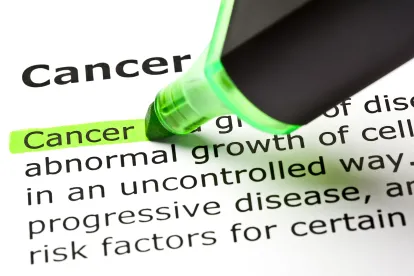To support the National Cancer Moonshot initiative, the USPTO launched the Cancer Moonshot Expedited Examination Pilot Program on February 1, 2023. The new program replaces the Cancer Immunotherapy Pilot Program, which expedited examination for eligible patent applications pertaining to methods of treating cancer using immunotherapy. The new program is open to a broader range of patent applications, including those directed to other treatment modalities and some cancer detection technologies, but has additional procedural requirements applicants should take note of.
The National Cancer Moonshot Initiative
The national Cancer Moonshot initiative was created in 2016 and led by then Vice President Biden. As president, Biden has set a new goal, according to the White House, “to cut the death rate from cancer by at least 50% over the next 25 years, and improve the experience of people and their families living with and surviving cancer.” According to the USPTO, the Cancer Moonshot Expedited Examination Pilot Program will “support the renewed national Cancer Moonshot initiative by providing a broader scope of qualifying technologies.”
The USPTO Cancer Moonshot Expedited Examination Pilot Program
As explained in this Federal Register Notice, the Cancer Moonshot Expedited Examination Pilot Program began on February 1, 2023 and replaced the Cancer Immunotherapy Pilot Program, which expired on January 31, 2023. The new program provides a mechanism for expedited review of patent applications by advancing qualifying applications out of turn to decrease the time to first Office Action. Notably, the new program broadens the scope of qualifying technologies to include technologies relating to the treatment of cancer by modalities other than immunotherapy and also includes some technologies relating to cancer detection.
Subject Matter Requirements
Under the Cancer Moonshot Expedited Examination Pilot Program, applications must be in the field of oncology or smoking cessation and must contain at least one of the following types of method claims:
-
A method of treating or reducing the incidence of a cancer using an immunotherapeutic compound or composition (cancer immunotherapy method).
-
A method of treating a cancer by targeting specific genetic markers or mutations using a specific pharmaceutical composition.
-
A method of treating a rare or childhood cancer using a specific pharmaceutical composition.
-
A method of detecting or treating a cancer using a medical device specifically adapted to detect or treat the cancer.
-
A method of treating a cancer by administering a specific pharmaceutical composition wherein the method comprises a step to diagnose the cancer.
-
A method of treating a nicotine dependency and promoting smoking cessation by administering a specific pharmaceutical composition.
Under the following circumstances, product and/or apparatus claims may be included in the new program:
-
Claims to an eligible method of detecting or treating a cancer using the same product/apparatus must also be presented in the same application; and
-
Such an eligible method claim must depend from or be commensurate in scope with the product/device claim(s) throughout pendency of the application.
Procedural Requirements
As a threshold matter, in order to be eligible for the program, the specification, claim(s), and abstract must have been submitted in DOCX format at the time of filing or national stage entry, and the application may not have been filed with a non-publication request.
To apply to participate in the program, an applicant must file a petition to make special prior to issuance of a first Office Action (including a restriction requirement) that meets the following criteria:
-
The petition must include a statement that special status under this program is being sought because the application is limited to the field of oncology or smoking cessation and contains at least one method claim that meets the eligibility requirements of the pilot program (method claim(s) must be identified);
-
The petition must include a statement that applicant will not exceed the claim limits set by the program (no more than 20 total claims, and no more than 3 independent claims);
-
The petition must include a statement that applicant will not cancel all eligible method claims;
-
The petition must include a statement that, should the USPTO find that the application is directed to multiple inventions, applicant will agree to make an election without traverse to an invention that meets the eligibility requirements of the pilot program;
-
The petition must include a statement that applicant agrees not to cancel all claims to the elected invention throughout the pendency of the application; and
-
The petition must include a statement that the application under consideration for participation in the program was not previously granted special status under any program.
The program will be in effect until January 31, 2025, or the date on which the USPTO accepts a total of 1000 grantable petitions, whichever is earlier.
Additional information about the program can be found here.
The DOCX Filing Requirement
At the time the Federal Register Notice was published, the USPTO was on the verge of imposing a surcharge for not filing a new U.S. patent application in DOCX format. Thus, at that time, the DOCX filing requirement only imposed an additional requirement on U.S. national stage applications (which will not be subject to the non-DOCX surcharge). However, now that the DOCX surcharge has been delayed, the DOCX filing requirement is an additional requirement for all applications that must be met at the time the application is filed.




 />i
/>i

